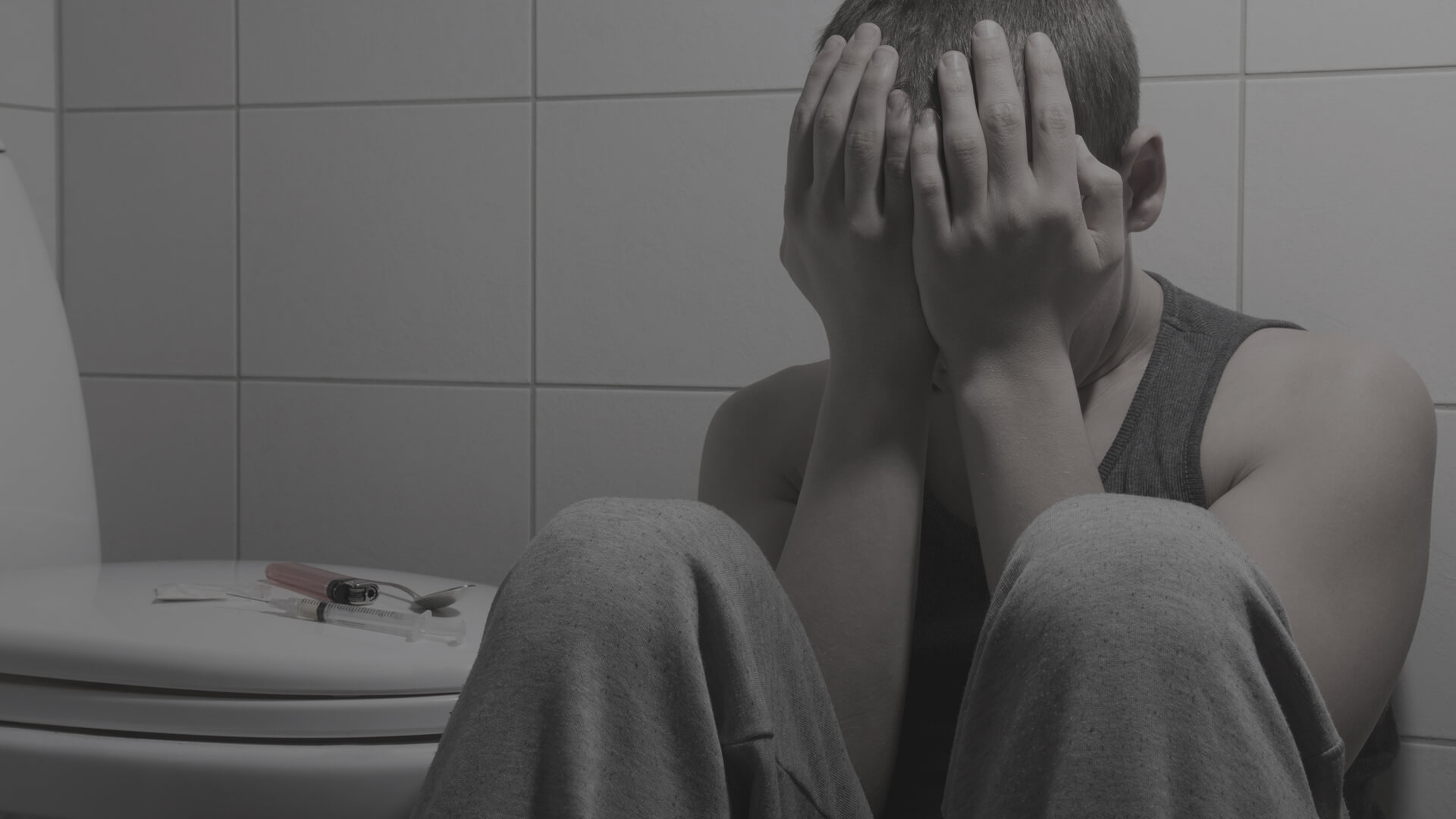Adolescence is a vulnerable time with high rates of substance use and emergence of psychopathology, both of which are associated with substantial morbidity. Opiate use in particular is a growing problem, especially among youth with co-morbid psychiatric symptomatology. Indeed, it has been shown that up to 83% of adolescents entering treatment for an Opiate Use Disorder (OUD) have at least one comorbid psychiatric illness, with greater than 50% having two or more psychiatric diagnoses.
High rates of ADHD and mania have been found in adolescent nonmedical prescription opiate (NMPO) users (those who use opiates at doses and/or frequencies higher than prescribed or without a prescription) and high rates of major depressive episode (MDE) in heroin users, with both NMPO and heroin users demonstrating high rates of Conduct Disorder (53%), MDE (40%), Generalized Anxiety Disorder (40%), ADHD (33%) and other mental health disorders (15–26%). Psychiatric symptoms may precede, exacerbate or follow substance use; in particular, it is likely that MDE precedes OUD by about three years.
Among adolescents, opiates are second in illicit drug abuse to marijuana. Of growing concern, in addition to recent increases in heroin use, is use of non-medical prescription pain medications (i.e. hydrocodone [Lorco, Vicodin, Norco]; oxycodone [Oxycontin]). Over four million Americans 12 years of age and older report current use of NMPO – approximately 500,000 of whom are between 12 and 17 years of age, and 1 million between 18 to 25 years of age. Alarmingly, since 2000 there has been a four-to-five-fold increase in mortality and substance treatment admissions related to NMPO use.
In the United States, 18- to 25-year-olds demonstrate the highest rates of heroin use. The risk of initiating heroin use is 13 times higher in adolescents and young adults with previous NMPO use, with peak age of heroin initiation being 17-18 years of age. Those who initiate NMPO use between 10-12 years of age are nearly 18 times more likely to transition to heroin use. Those who begin NMPO use at 13-15 or 8-9 years of age have about a 15 times greater risk of transitioning to heroin use. Adolescents and young adults often transition from NMPO to heroin due to the high cost, reformulation, decreasing availability, and increasing restrictions on pain medications. Progression from NMPO to heroin is associated with more rapid development of dependence, which is further associated with lower probability of treatment success.
The rates of prescribing opiates for adolescents and young adults have doubled in the past 20 years. In addition to obtaining a prescription, teens may also access these medications through diversion from friends, peers and/or family. Further, pain pills may be perceived by youth as safer than other illicit drugs because they are used for medical disorders and prescribed by physicians. The usual trajectory of experimentation to dependence is as follows: use with friends socially to relax, then with experience of euphoria and mood-elevating effect, teens may progress to daily use, with eventual tolerance and physiological dependence. This is especially true for adolescents with a mood disorder or depressive or anxious symptomatology.
SEVEN CHALLENGES FOR TREATMENT PROVIDERS
-
Identifying Youth and Counseling Parents:
While some clinical characteristics have been shown to differ for those youth using NMPOs (more likely to have polysubstance use, ADHD, prior psychiatric treatment, being mandated to drug treatment, and a history of selling drugs) versus those using heroin (more likely to be opioid dependent, an injection drug user and high school drop-out), it is incumbent upon the clinician to identify those who are at high risk of initial use (late-adolescence, Caucasian, suburban, psychiatric comorbidity) and transition from NMPO to heroin and other substances. Being familiar with the literature to date, and having a high level of suspicion, is of great import.
Once screened for use, speaking to parents about storing/securing medications in the home, as well as other homes which the adolescent frequents (ex. grandparents), and other ways to reduce risk of using must be addressed by clinicians. Further, once youth are identified, referring them to treatment may be difficult due to limited availability and high cost of trained clinicians and dual diagnosis programs for adolescents, along with reluctance on the part of parents.
-
Polysubstance Use:
Adolescents with OUD are likely to have other Substance Use Disorders (SUDs). Research shows that adolescents with NMPO-OUD (as compared to heroin-OUD) are more likely to have concurrent cannabis, alcohol, sedative and/or stimulant use disorders, three or more SUD diagnoses (which is associated with poorer treatment outcome), and early age of opiate and criminal activity initiation. Multiple SUDs makes identifying a pharmacotherapeutic target challenging. Further, many clinicians are hesitant to initiate psychiatric medications in youth given the potential for drug-drug interactions and side effects despite good medications that target psychopathology and co-occurring SUDs. However, co-occurring psychopathology should be treated, as this has been shown to result in improved mental health and substance use outcomes. Despite the risk of stimulant abuse among NMPO users with comorbid ADHD, ADHD should also be addressed. Treaters may choose a non-stimulant medication, guanfacine, clonidine, atomoxetine, or a stimulant with a mode of delivery with low abuse potential (i.e. Daytrana patch). Finally, effective, evidence-based behavioral therapies for disorders such as anxiety sub-types may be tried before initiating pharmacotherapy.
-
Approved Pharmacotherapy for Opiate Use in Youth:
Despite evidence of efficacy of methadone (full opioid agonist) detoxification and maintenance in youth, few practitioners are licensed to prescribe and monitor methadone in adolescents. The threshold for methadone maintenance in youth with OUDis two documented failures of drug-free detoxification. Many youth who have transitioned to regular heroin use meet this threshold, but often are not offered this treatment option. Buprenorphine (partial opioidagonist) is approved for use in youth 16 years of age and older; however, it is prescribed infrequently in adolescents despite promising outcome data for buprenorphine detoxification (greater treatment retention and higher rates of abstinence). There are training and licensing requirements for prescribers of buprenorphine as well.
Naltrexone (opioid antagonist) maintenance has also been shown to increase treatment retention, reduce use, and lead to psychosocial improvements. An additional benefit of naltrexone is that it comes in a long-acting injectable form administered monthly (Vivitrol), which improves compliance and decreases risk of relapse as patients are not able to impulsively stop meds and use opiates for a high. However, this form of naltrexone is not covered by insurance, so cost may be prohibitive. A combination of buprenorphine/naloxone short term maintenance (9-week maintenance + 3-week taper) has shown promise in regards to greater treatment retention and engagement, reduction of opiate use and use of other substances, and decreased risk of relapse, especially among those with active or greater numbers of medical and/or psychiatric illness, particularly depression and anxiety.
While these pharmacologic options are available to older adolescents, the challenge for clinicians working with youth is identifying physicians and/or programs licensed to prescribe and monitor these agonist/antagonist medications, and willing to work closely with youth and their families, convincing parents that these medications may be of utility, and having families commit to frequent medication retrieval and monitoring visits. Due to the infancy of the field of pharmacologic treatments for OUD in youth, duration of treatment for maximum effectiveness remains understudied. However, severe or multiple psychiatric co-morbidities may indicate the need for longer OUD pharmacotherapy.
-
Lack of access/availability of evidence-based programs/residential facilities:
There are few dual diagnosis programs for adolescent substance users with psychiatric comorbidity. Those that do exist may be remote in location, and/or costly. Further, programs that are available while providing behavioral intervention may not have treaters available for medication management, or may not offer evidence-based treatment. In either case, the mental health provider should assemble a multi-disciplinary team of providers — including a psychiatrist, mental health therapist, substance abuse clinician, pediatrician, and caseworker — to address the multitude of issues that may arise with a teen with comorbid psychiatric illness and SUD. These issues can include medication adherence, medical issues due to polypharmacy (side effects, drug-drug-interactions) or resulting from IV drug use (i.e. HIV, Hepatitis C), psychosocial issues (i.e. school dropout, juvenile justice system involvement, Department of Child & Family Services involvement) and skills training.
-
Assessment and minimization of HIV/Hepatitis C risk:
This is of particular concern for injection heroin users. Providers should complete a risk assessment upon evaluation that includes needle use and sexual practices (i.e. sharing v. using clean needles, multiple partners/unprotected sex). Further, the clinician should be able to provide resources for obtaining clean needles, sterile injection supplies and condoms, and continual monitoring of use of resources and engagement in safe drug use and sexual practices. Clinicians also need to provide a safe, trusting environment where adolescents feel comfortable divulging periods of drug use, as access to aforementioned resources during periods of lapse/relapse is essential. Finally, collaboration with adolescents’ pediatricians for ongoing lab work, birth control and vaccinations is key.
-
Peer/Community Use:
Initiation of substance use in adolescence generally occurs in a social context that is peer-driven. As such, encouraging teens to engage with clean/non-using peers and participate in alternative activities where drug use hinders success is important, as is helping teens establish and use skills that allow them to say “no” when in environments where drugs are available, and build feelings of competence and self-resilience. Adolescents may find this especially difficult, as peer acceptance/approval and autonomy are core features of adolescence.
Additionally, a prescription medication sub-culture exists among many suburban communities. In such communities, adolescents are more likely to use pills such as NMPO and stimulants as they are associated with lower perception of harm. Changing perceptions and consequences of use may be difficult if the treater is seen as lecturing, or attempting to undermine the teen’s independence. Thus, providing a safe and open environment to discuss such issues is important. Again, speaking with parents about access to prescription medications and consequences of use is of great import.
Heroin users are at increased risk of dropping out of high school. If the adolescent and their family are not engaged in treatment prior to dropping out, it may be difficult to locate and re-engage the teen in treatment. Lack of school attendance is also linked to extended poverty and criminality, which may result in need for further psychosocial and legal services. Clinicians should obtain permission from parents to contact school officials and collaborate with school-based clinicians and teachers throughout the course of treatment. This provides greater oversight over teens’ compliance with treatment and school attendance, allows for greater intensity of support in a naturalistic setting and provides the youth with more potential agents of change.
-
Accidental overdose:
The risk of overdose among those with OUD is high. There are increasing efforts to supply naloxone (nasal spray and auto-injector) to adults with OUD for overdose reversal, however research and clinical practice in this area lags in adolescent populations. Pharmacies in some states can provide naloxone without a prescription from a physician. For non-M.D. providers, providing teens with these resources and training for use of naloxone is invaluable. Additionally, the Department of Health and Human Services has offered to provide naloxone and administration training for school staff in high schools across the country. While the number of overdoses in schools is relatively low, the conversation about the use of naloxone in high schools amongst administrators, staff, parents and teens may increase knowledge about naloxone and its utility, as well as its use outside of school settings.
CONCLUSION
Primary prevention in early childhood to prevent use of NMPO, and secondary prevention in early adolescence to prevent transition from NMPO to heroin, is essential. Further, as depressive and anxiety symptoms and disorders appear to be a risk factor for OUD, early identification and treatment of psychiatric symptoms in children and adolescents may prevent later initiation of substance use. In those opiate-using adolescents with psychiatric comorbidity, an integrated, multidisciplinary treatment approach is necessary to address concomitantly substance use and psychopathology. Dual diagnosis interventions combining behavioral, psychosocial, familial and pharmacologic modalities are of great import given the complex interaction between psychiatric, substance use and possible pain/medical disorders. Treatments that focus primarily on psychiatric illness without concurrent substance use intervention may actually exacerbate mood and anxiety symptoms due to withdrawal, and if present, worsen pain/medical symptoms.
Clinicians should provide an atmosphere of constancy and consistency in a stable, supportive clinic environment with nonjudgmental staff where patients receive integrated pharmacologic intervention for medical, psychiatric and substance use disorders, extensive individual and group counseling, family work, and assistance with reintegration into school.
REFERENCES
- Cerda M, Santaella J, Marshall BD, et al. (2015). Nonmedical Prescription Opioid Use in Childhood and Early Adolescence Predicts Transitions to Heroin Use in Young Adulthood: A National Study. The Journal of Pediatrics, 167(3), 605-612.
- Center for Behavioral Health Statistics and Quality. (2015). Behavioral health trends in the United States: Results from the 2014 National Survey on Drug Use and Health (HHS Publication No. SMA 15-4927, NSDUH Series H-50). August 2016: Retrieved from http://www.samhsa.gov/data/
- Edlund MJ, Forman-Hoffman VL, Winder CR, et al. (2015). Opioid abuse and depression in adolescents: Results from the National Survey on Drug Use and Health. Drug and Alcohol Dependence, 152, 131-138.
- Fortuna RJ, Robbins BW, Caiola E, et al. (2010). Prescribing of controlled medications to adolescents and young adults in the United States. Pediatrics, 126(6), 1108-1116.
- Martins SS, Fenton MC, Keyes KM, et al.(2012). Mood and anxiety disorders and their association with non-medical prescription opioid use and prescription opioid-use disorder: longitudinal evidence from the National Epidemiologic Study on Alcohol and Related Conditions.Psychological Medicine, 42(6), 1261-1272.
- SubramaniamGA & Stitzer MA. (2009). Clinicalcharacteristics of treatment-seeking prescription vs. heroin-using adolescents with opioid use disorder.Drug and Alcohol Dependence, 101(1-2), 13-19.
- Substance Abuse and Mental Health Services Administration. (2013).Results from the 2012 National Survey on Drug Use and Health: Summary of National Findings, NSDUH Series H-46, HHS Publication No. (SMA) 13-4795. Rockville, MD: Substance Abuse and Mental Health Services Administration, 2013. August 2016: Retrieved from http://archive.samhsa.gov/data/NSDUH/2012SummNatFindDetTables/NationalFindings/NSDUHresults2012.htm
- Woody GE, Poole SA, Subramaniam G, et al. (2008). Extended vs short-term buprenorphine-naloxone for treatment of opioid-addicted youth: a randomized trial. JAMA, 300(17), 2003-2011.






